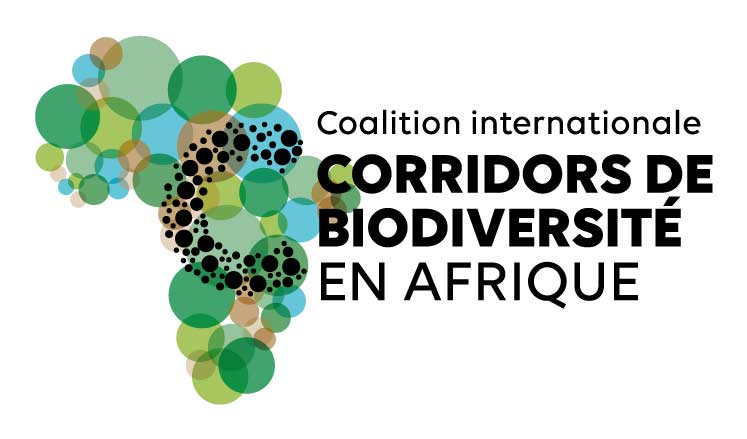Ce site utilise des cookies afin que nous puissions vous fournir la meilleure expérience utilisateur possible. Les informations sur les cookies sont stockées dans votre navigateur et remplissent des fonctions telles que vous reconnaître lorsque vous revenez sur notre site Web et aider notre équipe à comprendre les sections du site que vous trouvez les plus intéressantes et utiles.
- There is a historical transboundary conservation area between northeastern Tanzania and southeastern Kenya. The corridor is located in this area, between Mkomazi National Park in Tanzania (3,500 km2) and Tsavo National Park in Kenya (13,747 km2). Alongside corridors, there are many dispersal areas, and community zones. It is home to more than 78 species of mammals. It is one of the most vulnerable corridors in the region due to poaching, trafficking, and human activities threatening animal biodiversity. Also, its climate is dry and arid.
Thus, some connectivity initiatives have been developed, such as the “Tarangire Complex – Mkomazi Tsavo Elephant Corridor Initiative”.The project is intended to establish and maintain a functional elephant corridor between the Tarangire Complex in Tanzania and the Mkomazi and Tsavo ecosystems in Kenya. This corridor is crucial for facilitating seasonal migrations of elephant populations (about 12 800 elephants present), ensuring genetic diversity, and mitigating human-elephant conflicts.
In the context of the project “Makame Savannah : Protecting forests for pastoralists, wildlife and climate” , in the area of the Makame Wildlife Management Area (the largest of the country and the first to benefit from a carbon credit’s initiative), Carbon Tanzania has been developing a global carbon credit redistribution scheme with local communities. To do so, it developed in-ground activities dedicated to addressing environmental threats through a diversified perspective: biodiversity and ecological connectivity, land rights and climate change mitigation.The activities that have been developed in 5 villages consisted in:
- education infrastructure
- protection (operation activities for village game reserve scouts in charge of patrolling and monitoring the forest and its wildlife)
- governance (strengthening governance at a local, ward and district level, including the building of required infrastructure to enforce village by-laws.
- community infrastructural development needs
- administrative
- health services and infrastructure
Other initiatives exist such as: the “Greater Kilimanjaro initiatives to enhance community participation in sustainable conservation of the trans-frontier ecosystem and wildlife”; ”Resilient Villages ECOBOMA” ; “Investing in Maasai Women. »
Tanzanie
Périmètre de l’action : Tarangire Complex, Mkomazi, and Tsavo ecosystems, Makame wildlife management area
Surface : 360 898 ha
Bénéfices pour les communautés locales et gouvernance de l’action locale :
The corridor initiative aims to promote wildlife conservation while fostering sustainable livelihoods for local communities through ecotourism and community-based conservation initiatives. It also involves capacity building and empowering local governance structures to manage the corridor sustainably.
A neighboring UNEP’s project “Ecosystem-Based Adaptation for Rural Resilience” (2016-2024) will also contribute to increasing the resilience of communities facing climate change impacts, giving them opportunities for the development of diversified livelihoods.
Description des enjeux de cohabitation Homme / animal sur le corridor :
Période : Ongoing
Financeurs : United States Agency for International Development (USAID), International Fund for Animal Welfare (IFAW), David Sheldrick Wildlife Trust (DWST), World Wildlife Fund Kenya(WWF-K), Save the Elephants, Tsavo Trust
Porteurs de projet : Tarangire Conservation Project, Kenya Wildlife Service, Tanzania National Parks Authority, International Fund for Animal Welfare (IFAW ), African Wildlife Foundation (AWF) et au Kenya Wildlife Service (KWS), United States Bureau of International Narcotics and Law Enforcement Affairs.
Autres acteurs : Local communities, NGOs, government agencies, international conservation organizations, research institutions
En recherche de financement : oui
Type de financement(s) : carbon credits
Interruptions constatées sur l’action de corridor : Limited funding, political instability, land-use conflicts
Principaux obstacles à l’action et menaces : Poaching, habitat loss, climate change, infrastructure development
Références bibliographiques de l'action de corridor :
Rapport UNESCO 2017 Entretien WC/PC
www.kws.go.ke. (sd). ENQUÊTE AÉRIENNE DES ÉLÉPHANTS DE TSAVO-MKOMAZI | Service de la faune du Kenya . [en ligne] Disponible sur : https://www.kws.go.ke/content/tsavo-mkomazi-elephant-aerial-survey
Okita-Ouma, B., Koskei, M., Tiller, L., Lala, F., King, L., Moller, R., Amin, R. et Douglas-Hamilton, I. (2021). Efficacité des passages souterrains et des ponceaux pour la faune pour relier les habitats des éléphants : une étude de cas d'un nouveau chemin de fer traversant les parcs nationaux de Tsavo au Kenya. Journal africain d'écologie , 59(3), pp.624-640. est ce que je:https://doi.org/10.1111/aje.12873 .
https://www.rti.org/sites/default/files/corridor_assessment_report_final_main1.pdf
L’agriculture et la conservation peuvent être complémentaires | Fondation africaine pour la faune sauvage (awf.org)
Ngene, S., Njumbi, S., Nzisa, M., Kimitei, K., Mukeka, J., Muya, S., Ihwagi, F. et Omondi, P. (2013). Statut et tendances de la population d'éléphants dans l'écosystème de Tsavo-Mkomazi . [en ligne] Disponible sur : https://www.savetheelephants.org/wp-content/uploads/2016/11/2013StatustrendsTsavoMkomazi.pdf
Groupe de collaboration sur la biodiversité en Afrique (ABCG). (sd). Engager la communauté locale dans le maintien de l'importante population d'éléphants dans le paysage de Tsavo-Mkomazi, par Kenneth Kimitei et George Okwaro, AWF https://abcg.org/eventer/engaging-local-community-in-sustaining-the-large-population-of-elephants-in-tsavo-mkomazi-landscape-by-kenneth-kimitei- george-okwaro-awf-2/
Contacts de l’action : The Director of Wildlife, Wildlife Division, Ministry of Natural Resources and Tourism, Government City, Prime Ministers Street, P.O. Box 1351, DODOMA. Tel: +255 (26) 2321514/2321568 Fax: +255 (26) 2321147; 2321514 Email: dw@maliasili.go.tz Website: www.maliasili.go.t
